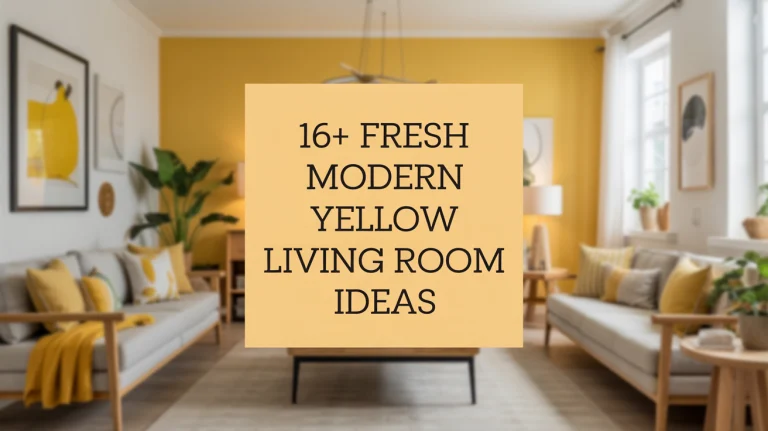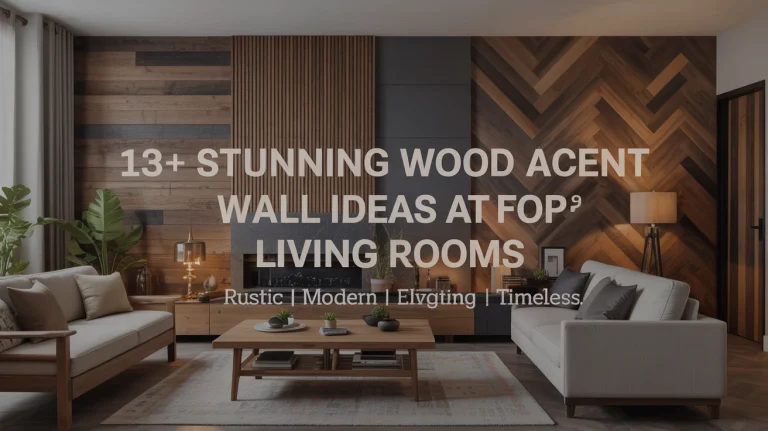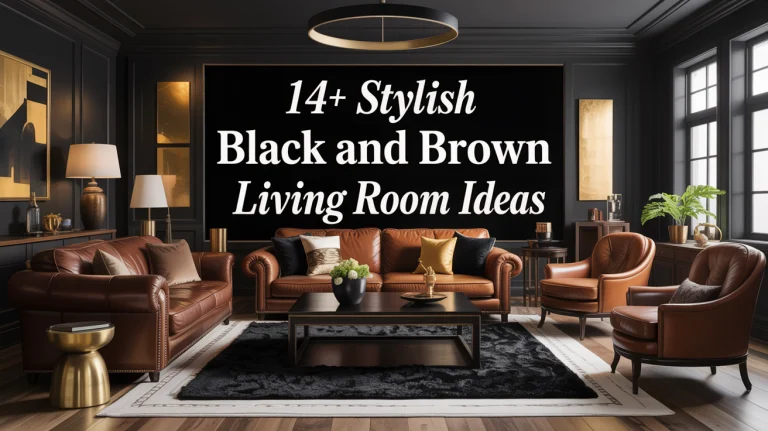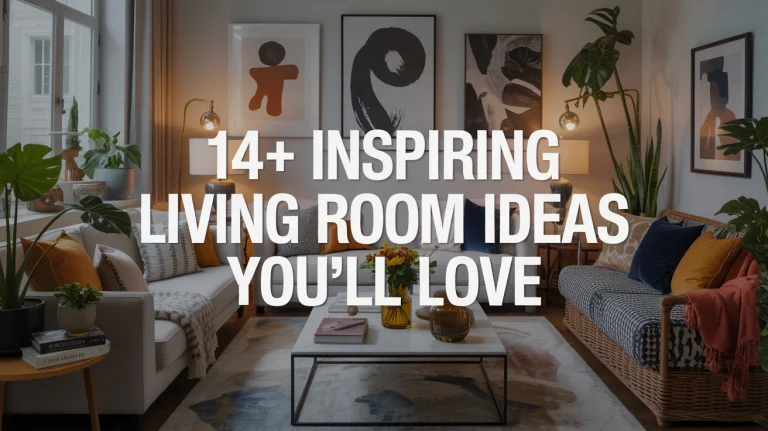14+ Ways to Make a Small Living Room Look Bigger
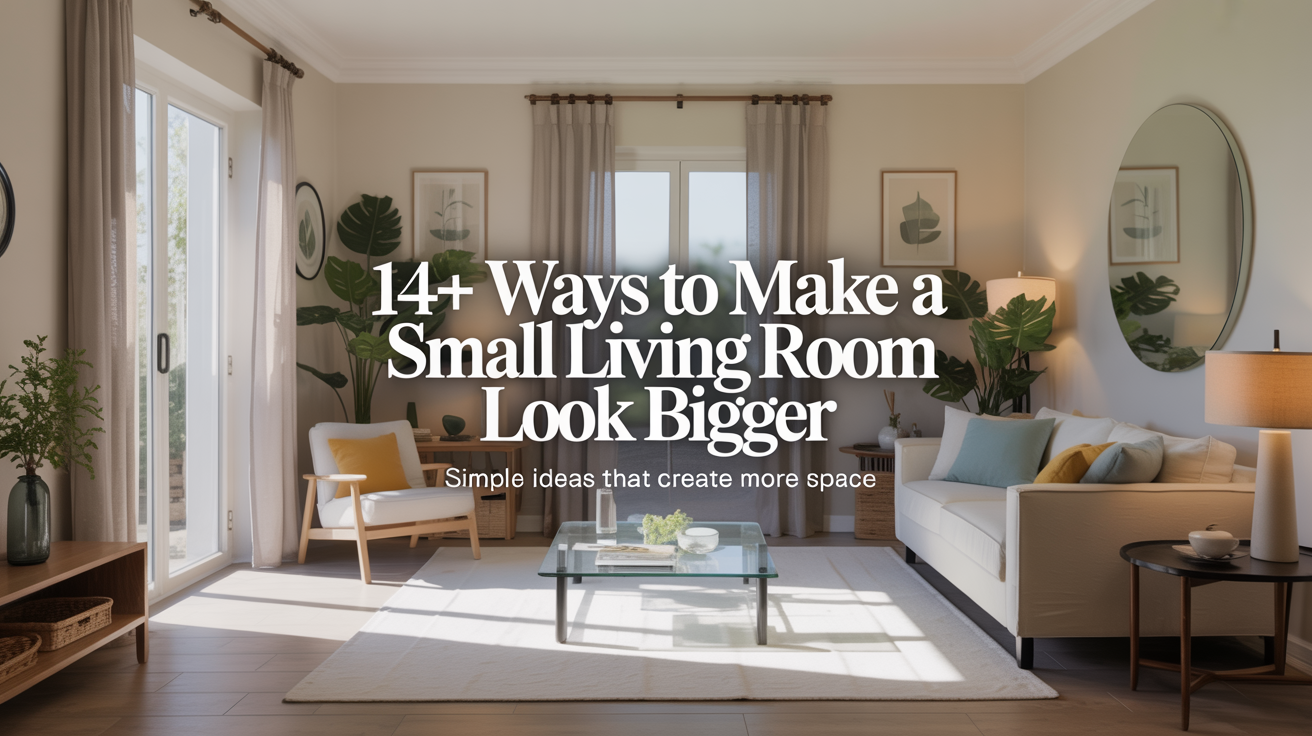
After designing homes for over twenty years, I’ve learned how to turn compact spaces into feeling-wide living rooms. If your living room feels cramped, this article shares 14+ real, expert tips to open it up. I explain each idea simply—so anyone can understand. No fluff. All proven ways to make your space seem larger and more inviting.
1. Use Light Paint Colors with Purpose

Choosing pale shades like soft white, gentle gray, or pale beige instantly opens the room. These colors reflect light, making walls feel farther apart. I don’t just suggest “light paint”; pick tones with warm undertones on the walls you see first. These create a feeling of airy space. On ceilings, use the same or lighter shade. That avoids visual edges and helps the ceiling seem higher. I’ve seen rooms shrink back when ceiling colors contrast sharply—so keep it consistent.
2. Let Natural Light Take the Lead

Unblocked windows are magic. Avoid heavy curtains. Instead, install slim rods near the ceiling and hang transparent or light curtains that gently move. This lets daylight pour in and floods the room from top to bottom. I often replace dark drapes with linen or sheer panels, drawing them all the way to the corners. That subtle shift alone can expand your perception of width, height, and depth.
3. Choose Mirrored or Reflective Surfaces

Mirrors double visual space when placed across from a window or light source. I prefer larger, thin-framed mirrors hung vertically to stretch the room’s height. Reflective furniture tops—like glass coffee tables or glossy lacquer finishes—also bounce light across the room. Avoid clutter on them. A clear surface helps light flow uninterrupted, making corners feel further back.
4. Arrange Furniture Facing Outward

Instead of pushing everything against walls, let some pieces float. I often place a sofa a few inches from the back wall. That creates a tiny space you can peek behind, making the room feel deeper. Facing main furniture toward the center channel traffic, not toward walls. Use small side tables that tuck in. This composition keeps visual lines from stopping abruptly at walls, and it draws the eye inward and outward.
5. Opt for Low Profile and Scaled Furniture

Bulky, tall furniture encloses a room. I always recommend sofas and chairs with low backs and slender arms. Choose only the pieces you really need. Narrower couches, armless chairs, and small ottomans help maintain flow. Use furnishings scaled to the room’s actual width—one three seat couch and simpler chairs instead of multiple oversized items. This keeps walkways clear and the space feeling open rather than crowded.
6. Use Area Rugs to Define Zones

A well chosen rug defines each section of the room. I avoid wall to wall carpet and instead place a rug under key furniture. The rug should reach under front legs to anchor the space. This visually separates the seating area from walkway or other areas without closing in. Horizontal rug patterns also lead eyes across the width. I choose light tones with subtle patterns so the space stays uplifting, not busy.
7. Hang Curtains High and Wide

Curtion placement changes perceived height and width. I mount rods just below the ceiling and extend them beyond the window frame. That makes windows look larger and the wall appear taller. Draw curtains to the sides fully when open, clearing the window entirely. This framing trick makes the whole room appear taller and broader.
8. Keep Floors Visible

Letting the floor show beneath furniture or through walkways adds breathability. I regularly use furniture on legs instead of floor-to-floor cabinets. That way, you see the floor flowing underneath. Light toned wood or tile that extends across the room helps unify space and reduces visual barriers. You still want soft rugs, but leave enough open floor around furniture for eyes to move freely.
9. Streamline Décor and Clutter

Too many small decorative items break up visual flow. I always edit accents kindly: one big art piece instead of several small frames; a slim vase instead of multiple trinkets. Large, simple décor items unify attention point. Clear surfaces and minimal accessories keep the room feeling free. I also use shelves with open backs and floating shelves to avoid full bookcases that block sight lines.
10. Use Built Ins or Slim Storage

Bulky cabinetry closes in. I favor built ins that hug corners or use narrow wall shelving. Slim credenzas with legs make wall space open underneath. Floating cabinets keep objects off the floor. Even in small rooms, having storage with transparent baskets or open cubes gives the feeling of space behind. It’s real-space saving rather than visual blocking.
11. Place Lighting Strategically to Expand Depth

Layered lighting draws the eye upward and outward. I use floor lamps in corners, table lamps beside seating, and picture lights or wall sconces. Lighting placed behind furniture casts a glow that opens the wall, making it feel farther away. Avoid a single central fixture. That tends to flatten space. Instead, spread light sources to light up corners and vertical surfaces.
12. Use Transparent or Open Furniture

Choose coffee tables or side tables made of glass or acrylic so you can see through them. I’ve installed clear pieces so the eye travels across the room uninterrupted. If you need a bookshelf or storage, consider one with open cubbies instead of closed drawers. This transparency keeps air flowing visually, making even small living rooms feel more expansive.
13. Introduce Long Horizontal Elements

Horizontal lines make a room seem wider. I hang horizontal art above the sofa or use a long, low console under a TV. Shelves that run across one wall also lead the eye across the width. I make sure these elements align, so eye movement doesn’t stop. Horizontal lines add calm and open the perception of space.
14. Use Recessed or Slim Lighting Instead of Floor Lamps

Floor lamps or tall stands can block visual flow. Instead, I mount recessed lighting, track lights, or narrow wall sconces. These keep the floor and corners free. Even slim uplights tucked behind sofas help brighten without bulk. That means furniture doesn’t block sight lines and rooms feel airier.
15. Add Vertical Elements to Elevate Height (Bonus Tip)

Adding touches that draw the eye up—like a tall, narrow plant, vertical artwork, or window molding that extends upward—can make ceilings seem higher. I place tall plants in corners or hang vertical prints beside windows. That balance between horizontal and vertical helps use the full sense of height, making walls feel less enclosing.
Why These Ideas Work
All these methods work because they play with perception rather than physically expanding square footage. Light colors, reflection, open sight lines, scaled furniture, and strategic lighting all trick the eye into seeing more space. When you remove visual barriers and let light flow, rooms breathe. These aren’t trendy hacks—they are proven strategies based on decades of real room planning.
How to Apply Them Together
Start by repainting in a light tone and clearing window coverings for daylight. While waiting for paint to dry, arrange your furniture off walls and choose lower profile pieces. Swap heavy décor for open shelving or one meaningful piece. Layer lighting next: add wall sconces, a lamp in each corner, and reflective surfaces. Add a slim rug to unify the main seating area. Finally, edit clutter, keep visible floor space, and add vertical accents for height. As you implement step by step, the transformation happens naturally—and often feels bigger than a new room.
Common Mistakes to Avoid
Sometimes people paint one wall dark and think it will add depth—that often closes space instead. Or they buy oversized furniture hoping it looks luxurious, but oversized scale shrinks a room faster. Hiding everything inside heavy storage or tall cabinets also blocks sight lines. Avoid crowding corners with too many pieces; those create visual stops. Cluttering surfaces leads eyes to stall rather than travel. The goal is to let your eye travel freely across the space—from light wall to reflective surface to open floor.
Real Life Example from My Portfolio
In a small living room only 12 × 14 feet, I applied these ideas: soft off white walls with warm gray undertone, sheer drapes hung wide, a wall hung mirror opposite the largest window, a low back couch floating six inches from the back wall and a small clear glass coffee table up front. I installed slim floating shelves and corner floor lamps. Within days, the room felt twice its size. Guests often asked if the layout had changed or if it had been extended. It hadn’t—it just felt larger.
Final Thoughts
You don’t need to overhaul your living room. Instead, apply smart changes—paint, light, furniture layout, scale, storage, and décor editing. Focus on allowing paths for light and eye travel. From decades of design work, I can say: small rooms don’t have to feel tight. Each of these 14+ ways has deep value when used together. They open the room so naturally the space feels fresher and more spacious—without crowding in.
You now have expert, down to earth guidance. Start with color and light, then layer in furniture, reflection, and scale. All done in clear, simple steps that any reader can follow. That’s real design expertise, distilled into an easy, human read.

